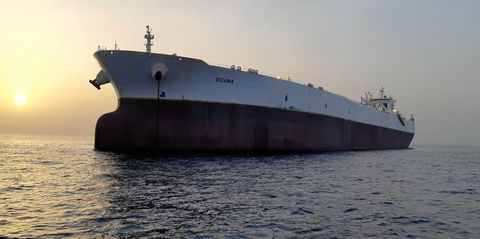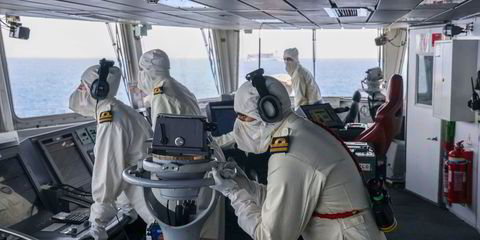Traffic on the Northern Sea Route (NSR) is set to grow but the challenge will be to make it safer, more reliable and economically attractive for shipping.
A feasibility study conducted by the Centre for High North Logistics (CHNL) in Kirkenes in northern Norway, which brings together representatives from six Arctic countries, has been examining the importance of the Arctic route for Russia and northern Scandinavia, and how it could create value for the wider Eurasian-Arctic economy.
Key among the initial findings is the need for the development of transshipment hubs at the western and eastern ends of the NSR.
CHNL senior researcher Bjorn Gunnarsson, whose vision is one of an integrated Eurasian transport system that takes in China’s One Belt, One Road initiative and the Arctic Corridor project in Scandinavia, shared some of the study’s key findings with delegates at Nor-Shipping's Agenda Ocean conference in Oslo.
The study showed how an improved maritime and logistics system could boost regional development through connecting maritime infrastructure with new railways, river transport and airfields in the Arctic.
Gunnarsson said the research also provided a detailed analysis of shipping activity along the NSR in 2016 — showing current activity was greater than at any time in the past.
Shipping along the NSR in the coming years and decades will mostly be traffic transporting commodities such as oil, gas, coal, mineral ore and frozen fish from the Arctic to markets in Europe and Northeast Asia.
Inbound transport will be predominantly project and general cargo. Gunnarsson said this had been seen over the course of the past two years with the shipments to the port of Sabetta on the Yamal Peninsula.
International shipping between Arctic ports also will continue to be important.
The CHNL believes transhipment on the NSR gradually will increase in volume but it will likely not be significant until hubs are established at both its western and eastern gateways.
Gunnarsson indicated that the most likely location for transhipment centres in the west will be in the Kirkenes-Murmansk area in the Barents Sea and at some point past the Bering Strait in the east, perhaps in the Aleutian Islands.
“We’ve been looking at Dutch Harbor, for example,” he told TradeWinds.
The hubs would be serviced by shuttle vessels sailing on a year-round basis, so shipowners would not have to invest in their own ice-strengthened tonnage. Feederships would deliver cargoes to and from the hubs to their final destination.
“We were able to identify several factors in the current maritime transport system of the NSR that needed to be modified, changed or added,” Gunnarsson said.
Making the system more sustainable would include changes in the NSR’s overall administration and management, support services and physical infrastructure, he added.
The first phase of the research project was financed by Norway’s Ministry of Foreign Affairs and South Korea’s Ministry of Ocean and Fisheries, and is now being extended. Russian state ice-breaking company Rosatomflot also participated in the work.
A final feasibility report is in the works. Gunnarsson said a number of concrete suggestions were "already being worked on” as a result of CHNL's recommendations, although they would take time and considerable investment.




